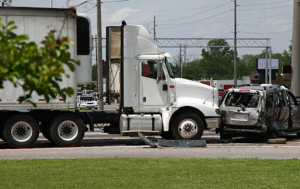With Summer here and temperatures quickly rising, so are the deaths of those children left behind in vehicles – we wanted to share the federal bill that is in the works. The Hot Cars Act is a federal bill that calls for technology that can detect a child left behind in a vehicle and let people know that child is in danger. Supporters at Kids and Cars say this technology could be the difference in saving lives.
Thetechnology uses sensors to detect a child or a pet. Vayyar’s 3D imaging sensor can detect movements throughout the car after the engine is off. If there is someone detected, the system will alert the registered driver via text message or phone call, sound the car alarm or, if the car is electric, activate the air conditioner. Other technologies can detect carbon dioxide, weight, vitals, temperature, and more. Today, Hyundai and Kia already have similar systems in some of their models.
This new tech device may help you avoid a senseless tragedy.
Rep. Tim Ryan and Rep. Jan Schakowsky, with the help of child safety advocates, are pushing to make the technology a standard in all new cars. The latest reintroduction of the Hot Cars Act went to the U.S. House of Representatives on May 12. It’s been a tough battle. Years of similar proposals have been ignored or only partially supported, and all the while, deaths in hot cars have continued.
According to data collected by KidsAndCars.org, over 1,000 children have died from heatstroke in hot cars since 1990. The year 2018 had the most child hot car deaths with 54 children lost. With summer around the corner, KidsAndCars.org founder and president Janette Fennell wants to keep the number of children’s lives lost down – “We’ve been working on this [child hot car deaths] and other issues for 25 years and It’s just so extremely disappointing that people don’t understand how often children are killed or injured after being in a car alone,” Fennell said.
Cathy Chase, the president of Advocates for Highway and Auto Safety, said the new technology is practical and cost effective. “We’ve had a number of demonstrations that we held on Capitol Hill to inform lawmakers that show that this technology is incredibly precise, as well as inexpensive,” Chase said. “There are all these technologies that we know can be saving lives. But yet, auto manufacturers are resistant to put them into cars for a variety of reasons, and it’s to the peril of the entire motoring public.”
The problem of hot car fatalities is a difficult one to measure statistically. The national Fatality Analysis Reporting System (FARS) collects data on fatal accidents on public roads and highways. But it doesn’t collect data on non-public roads and highways. KidsAndCars.org filled the holes in the data by collecting statistics on child hot car deaths, trunk deaths, and cars running over children.
How do you feel about this federal bill? Will it make a difference in the amount of yearly deaths caused by leaving children behind in hot vehicles?
Let us know on our socials! @AccidentMedicalGroup / En Español: @AMG.Ayuda






